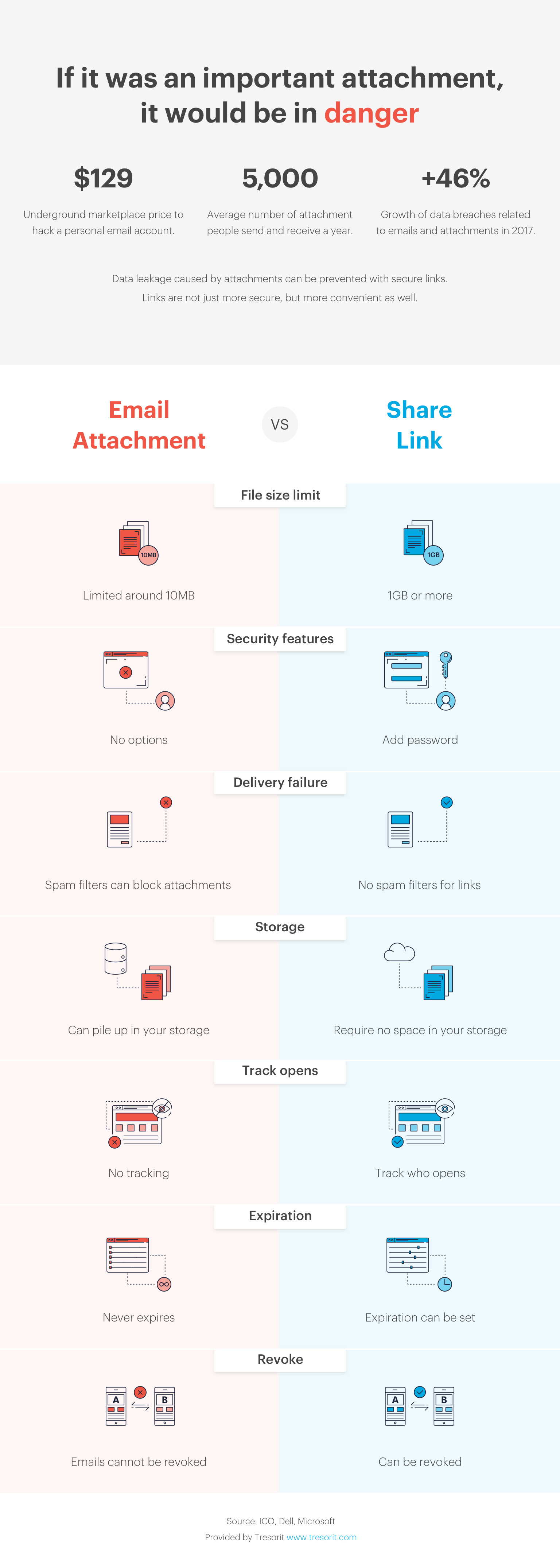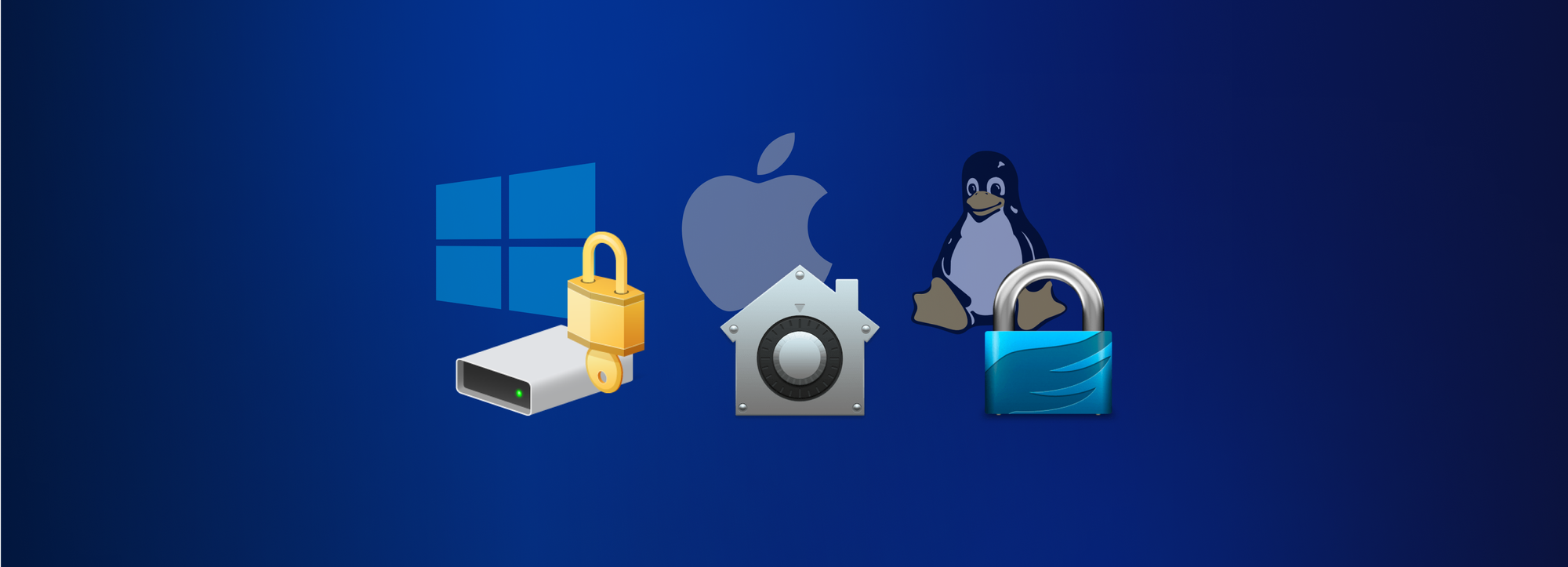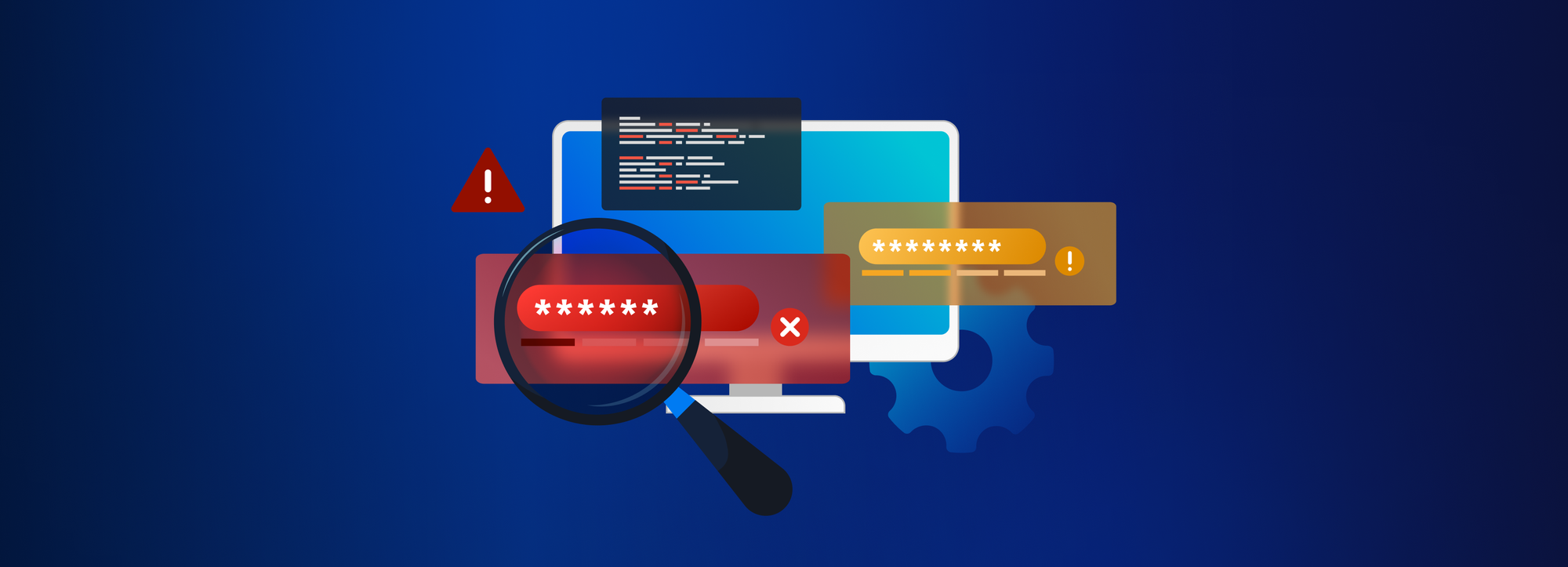Why should you reconsider sending email attachments?

Email attachments: are they safe? Did you know that the growth of data breaches related to emails and attachments increased by 46% last year? This is alarming given email is by far the world’s most popular business communication method; over 2 million emails are sent every second. People share pictures, contracts, presentations and many other types of files every day. Most are transferred through emails regardless of whether they are sensitive or not.
Recently we have conducted a research on the risks of file sharing via email attachments and the outcome is (unsurprisingly) worrying. More than 1/3 people admitted, that they have accidentally sent an email to the wrong recipient. Another study shows that over 50% of data breaches have been attributed to human error, such as sending emails to a wrong address.
Here comes the problem, once you send an email it’s gone. You lose control over the attached files and you don’t even know if your file was opened by the recipient.
Unfortunately, your company data can leak due to other reasons than accidents or human error. Another problem is that email accounts are an easy target for hackers. Underground marketplaces provide a wide range of services to hack anyone’s email account. According to a report, anyone can have a personal email account hacked for $129 or a corporate one for $500. Once an email account is hacked, all email attachments in the inbox are compromised.
The good news is that such attacks and accidental leakages can be prevented by refraining from sending sensitive files as email attachments. Share links can provide much more control over sent files. Let’s say you’ve just finished the company sales strategy presentation, and you’d like to share it with a colleague. You upload your file to the cloud and create a password protected share link to send it. You send the link via email and the password via chat or SMS, but at this moment you realize that you sent the email to someone else outside of your company.
If it was an email attachment, there would be nothing to do to save the situation. But sharing the password on a different channel makes it very unlikely to make the same mistake twice. However, even if you do send the password to the same wrong addressee, you can still revoke the link. By doing so, you make the shared document immediately unavailable to the recipient.
Sending files with a share link instead of email attachment is not only safer, but it can also improve your collaboration with your colleagues. What else makes links better than email attachments? Find the answer in the infographic below:

Want to check it out for yourself? Sign up for a free trial here






